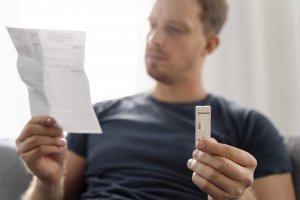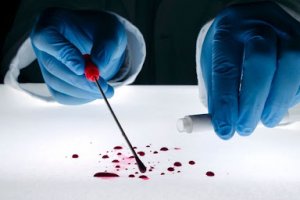As DNA relationship testing becomes more widely available and reasonably priced, more individuals use genetic testing to learn more about their ancestry and contact their biological family. One form of genetic test that may assist people in determining their physical link with their siblings is the sibling DNA test. Sibling relationships may be challenging, mainly when several biological parents have split apart at birth. In such cases, sibling DNA testing might aid in bringing resolution and clarity. People may choose which sibling DNA test to take and what to anticipate from the findings by being knowledgeable about the many kinds of sibling DNA testing, their accuracy, and their limits.
This blog article will provide an overview of the various sibling DNA test types, covering half-sibling and full-sibling testing. We will also review the benefits and drawbacks of these exams and the variables that may impact their accuracy.
Sibling DNA Test Overview
A form of genetic test called a sibling DNA test examines the DNA of two people to ascertain their biological kinship. These procedures often establish if two individuals have the same parent or parents. Half-sibling and full-sibling tests are the primary categories into which sibling DNA testing may be generally divided. Full-sibling tests are used to establish if two people share both of their biological parents. In contrast, half-sibling tests prove whether two people have only one biological parent.
A sibling DNA relationship testing examines the two people’s DNA for specific genetic markers. These genetic markers are unique to each person and are passed down from their biological parents. The test may estimate the possibility of a physical link between two people by analyzing their genetic markers. Sibling DNA testing is exact and may provide clear findings. These exams do have certain restrictions, however. The precise degree of kinship between siblings, such as whether they are first or second cousins, cannot be determined by sibling DNA testing. Also, if one of the siblings has a genetic mutation, the test’s accuracy may suffer.
DNA Test For Half-Siblings
A DNA test for half-siblings may reveal if two people have the same biological father. This test is often used for siblings who share only one biological parent or have different moms or dads. DNA testing for half siblings often examines fewer genetic markers than for complete siblings—the test searches for specific features that both siblings have, proving their biological kinship. There is a greater chance that two people are biologically related to the more genetic markers they share. Understanding that a DNA relationship test for half-siblings cannot reveal whose parent the two children share is crucial. This implies that the test can only establish that they have a common parent, but not whether their mother or father. Half-sibling DNA testing might be helpful for those wishing to connect with siblings they may not have realized existed. The test may reveal important details and be a first step in building ties with biological relatives.
Test for All Siblings’ DNA
It is possible to tell if two people share their biological parents with a full-sibling DNA test. When siblings wish to confirm they have the same mother and father, they often use this test.
DNA testing for whole siblings examines more genetic markers than for half siblings—the test searches for specific characteristics that both siblings have, proving their biological kinship. There is a greater chance that two people are biologically related to the more genetic markers they share.
Full-sibling DNA testing might be helpful for those who want to connect with their biological family or confirm a natural tie with their siblings. The test may help establish a connection with physical family members and provide essential details about family history and lineage.
Full-sibling DNA testing has limits that should be considered when interpreting the findings, so proceed with care. The accuracy of the test findings, for instance, may be impacted if one sibling possesses a genetic mutation or variation that the other sibling does not. Moreover, full-sibling DNA testing cannot pinpoint a sibling’s specific degree of relatedness, such as whether they are first or second cousins. To confirm a biological tie between siblings, it may sometimes be required to do further testing, such as a grandparent DNA test or an aunt/uncle DNA test. These tests may provide additional data that can be used to support or contradict the findings of a full-sibling DNA test.
Benefits and Drawbacks of Sibling DNA Relationship Testing
Sibling DNA testing is exact and may provide clear findings. The exams do have certain restrictions, however. The precise degree of kinship between siblings, such as whether they are first or second cousins, cannot be determined by sibling DNA testing. Also, if one of the siblings has a genetic mutation, the test’s accuracy may suffer.
Conclusion
DNA testing performed on siblings may reveal important details about their biological ties. It’s critical to comprehend the several sibling DNA test varieties and their applications. These tests are helpful for anybody trying to connect with their birth family, even if they have drawbacks and benefits.







Leave a Reply
Your email is safe with us.
You must be logged in to post a comment.